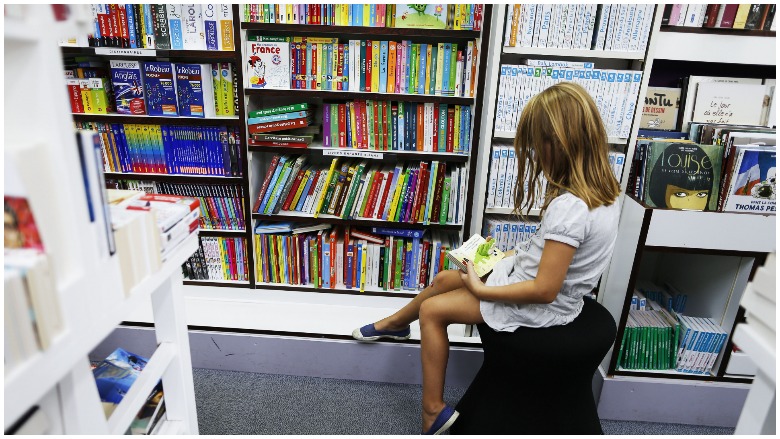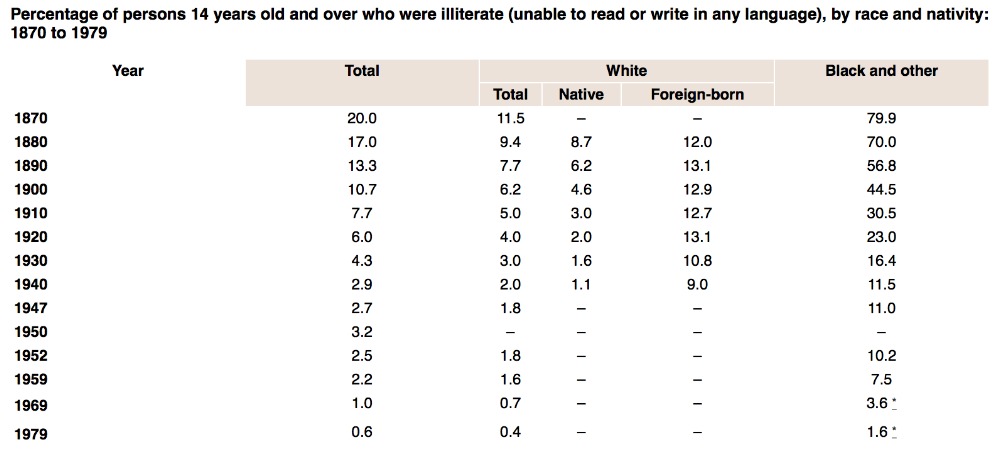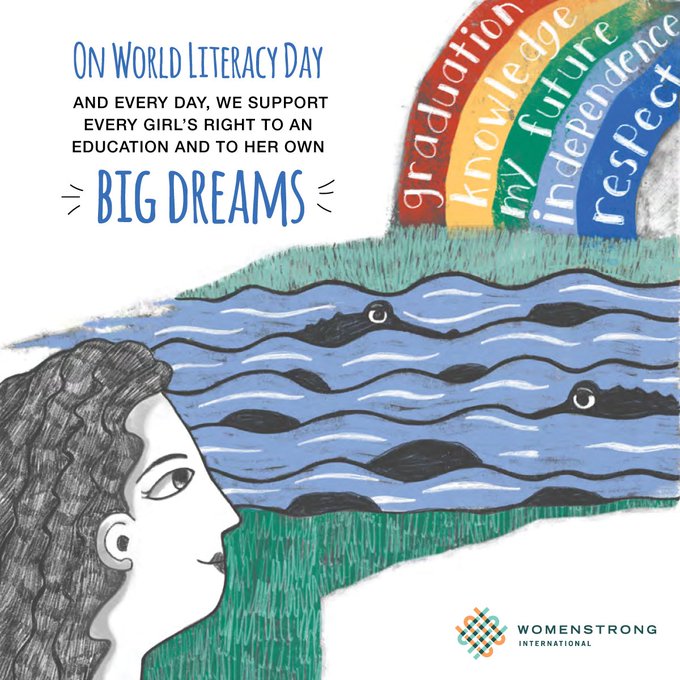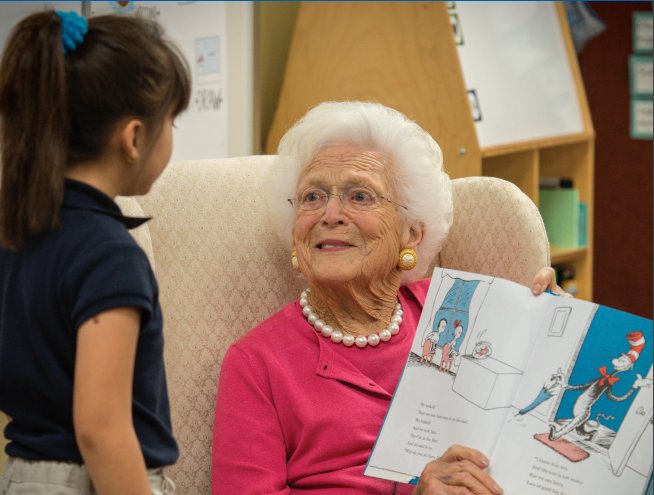
Getty
International Literacy Day is September 8. The number of adults who can read and write across the globe has increased dramatically within the past 200 years.
But in the United States, statistics show that reading proficiency has lagged. A substantial percentage of American adults struggle to improve their reading comprehension skills beyond that of an elementary school student.
Here’s what you need to know.
1. The Ability to Read and Write Has Expanded On a Massive Scale Since the 1800s Worldwide, Especially Among Younger Generations

Getty
The ability to read and write expanded slowly throughout most of history. The invention of the printing press in 1450 made it easier for books and newsletters to be copied and spread across wider regions. But literacy was still a luxury afforded largely to the elite. Researchers at the University of Oxford say that by 1820, only 12 percent of the world’s population knew how to read a book or write their name. Let that sink in: Only 12 out of every 100 people.
Skip ahead to present day. The Oxford study, put together by Max Roser and Esteban Ortiz-Ospina and published in 2018, reveals just how quickly literacy has expanded over the past two centuries. Today, an estimated 83 percent of people worldwide can read and write. That’s a huge turnaround. But it also means that literacy is still out of reach for 17 percent of the world’s population.
The good news is that younger generations are getting access to more learning opportunities than in decades past. For example, researchers found that in Algeria, 97 percent of young people between the ages of 15 and 24 can read. But for people over age 65, the literacy rate was just 28 percent.
Sub-Saharan Africa has major challenges to overcome compared to the rest of the world. The Oxford study found that three nations with literacy rates below 30 percent: Burkina Faso, Niger and South Sudan. By comparison, several other African nations have higher rates more relative to the rest of the world. Examples include Namibia, Kenya, Libya, Botswana, and South Africa, all with literacy rates above 85 percent. You can see the full Oxford study here.
Another study found that roughly two-thirds of the illiterate adults across the globe are women. The Department of Economic and Social Affairs at the United Nations put together the report, called World’s Women 2015: Trends and Statistics. They estimated about 781 million adults over the age of 15 could not read or write. Of those people, an estimated 496 million were female.
On an optimistic note, this research showed similar results as the Oxford study in terms of improvement among younger generations. The United Nations says that 87 percent of young women and 92 percent of young men have at least basic knowledge of reading and writing. However, researchers say large numbers of those adolescents do not get a chance to expand on that skill. In 2012, only 72 percent of girls and 74 percent of boys across the world attended secondary school. 57 percent of the children who are not in school live in Sub-Saharan Africa.
2. Adult Literacy in the United States Has Reportedly Stagnated in the 21st Century, With 43 Percent of the Population at Basic or Below Basic Reading Levels

Getty
When it comes to literacy, the United States is comparably doing much better than other parts of the world. But statistics reveal that a major portion of the population struggles to read beyond the most basic level.
According to the National Center for Education Statistics, an estimated 30 million people 16 years and older in the United States are at a “below basic” reading level. That is defined as “no more than the most simple and concrete literacy skills.” That is 14 percent of the population. 55 percent of this segment do not have a high school diploma. 63 million adults, or 29 percent of the population, have “basic” literacy skills.
To put these statistics into perspective, it means that a huge number of American adults may struggle to read a newspaper or decipher a bill. The Organization for Economic Cooperation and Development also estimates that a full 50 percent of adults may struggle to read a book at the 8th grade level.
A lack of literacy skills has been shown to have long-lasting impact on a person’s quality of life, especially as it relates to job opportunities and financial security. And the Department of Justice has found that education levels correlate with incarceration rates. An estimated 85 percent of juvenile offenders are defined as “functionally illiterate.” More than 60 percent of adult inmates reportedly struggle to read above a 4th grade level.
3. School Enrollment Has Increased in the United States But Reading Proficiency Still Lags Among High School Students

U.S. Department of Commerce, Census BureauIlliteracy rates in the United States from 1870 to 1979.
The number of children getting access to education in the United States steadily increased during the 1800s. The National Center for Education Statistics states that about 50 percent of adolescents between the ages of 5 and 19 were enrolled in school during the second half of the 19th century. Before the Civil War, only a small number of black children were permitted to attend school in the northern states. After emancipation, enrollment tripled in one decade: 10 percent in 1870 to 34 percent in 1880.
That upward trend continued in the 1900s for both white and minority populations. By 1940, 75 percent of children and teenagers attended school. School enrollment increased to 90 percent by the early 1970s, and rose to about 96 percent by the late 1980s.
The literacy conversation has shifted over the past few decades in the United States. In the modern age, the goal is not to achieve just rudimentary reading and writing skills. The goal now is to improve on that elementary knowledge. The graph above would suggest that the United States is doing extraordinarily well, with less than one percent of the total adult population being illiterate. But that does not factor in the level of skill, as discussed in the section above. In 2015, the National Assessment of Educational Progress gave students the 12th Grade Reading Level Assessment. It found that 46 percent of white students scored proficient on the reading test. Among black students, only 17 percent were proficient or above, and 25 percent of Latino students were proficient. Far less than half of 12th grade students in the United States are reading at a 12th grade level.
4. Libraries Continue to Play a Crucial Role in American Education and Literacy
A majority of Americans feel that libraries play a crucial role in advancing education, as well as provide key services to local communities. And despite the rise of mobile devices, the demand for printed books has actually increased in recent years. The Wall Street Journal reported that ebook sales had actually decreased in 2016 while traditional print book sales rose.
Just like how TV did not kill radio, online reading did not end up killing the need for libraries. According to the American Library association, there are about 16,500 public libraries operating across the nation. And communities still feel that these institutions play a vital role and provide crucial services.
A survey conducted through September and October of 2017 analyzed perceptions of libraries. Some of the key takeaways of the survey included:
• 55 percent of those surveyed agreed libraries are an essential public institution
• 58 percent feel public libraries help to advance education
• 44 percent view libraries as community gathering places
• 70 percent visited a pubic library within the last year, while 52 percent visited a library’s website
• 58 percent said they were likely to support local ballot initiatives to benefit libraries
• 67 percent place high importance on a library providing quiet areas for doing work or research
• 65 percent place high importance on libraries providing free access to computers and the Internet
5. Multiple Organizations Are Working to Improve Literacy in the United States and Around the World, Including One Founded by Former First Lady Barbara Bush

GettyBarbara Bush
Expanding adult literacy in the United States was a primary mission for former First Lady Barbara Bush. During her time in the White House, she founded the Barbara Bush Foundation for Family Literacy. The website includes a quote from Mrs. Bush about how literacy and a desire to success go hand-in-hand. “The American Dream is about equal opportunity for everyone who works hard. If we don’t give everyone the ability to simply read and write, then we aren’t giving everyone an equal chance to succeed.” The non-profit organization’s chief strategy is to help raise money for family literacy programs across the United States. The site stresses the importance of helping parents improve their reading skills in order to pass on that knowledge to their children.
The organization “Save the Children” is working to improve reading and writing skills worldwide. The group pushes to help entire families with literacy development because it has found that children who practice reading outside of school can dramatically improve their skills. According to its website, “Save the Children” operates in more than 30 countries and has impacted nearly 4 million children.
In 2016, researchers from Stanford University teamed up with Save the Children on a reading study in Rwanda that put Save the Children’s theory to the test. The goal was to determine whether literacy programs aimed at helping the entirely family, called “Literacy Boost,” improved children’s literacy than school instruction alone.
The research team tracked a group of children for two years. The ones that were involved in Literacy Boost, and the ones that received only school instruction, showed literacy improvement. But the children involved in the family program scored dramatically higher on reading tests. Stanford professor Claude Goldenberg, who helped lead the study, said of the results: “An effort that involves home and community intervention– coupled with teacher training and school intervention– is going to produce more robust, stronger effects than just teacher training alone.”
READ NEXT: Can a Supreme Court Justice Be Removed?

